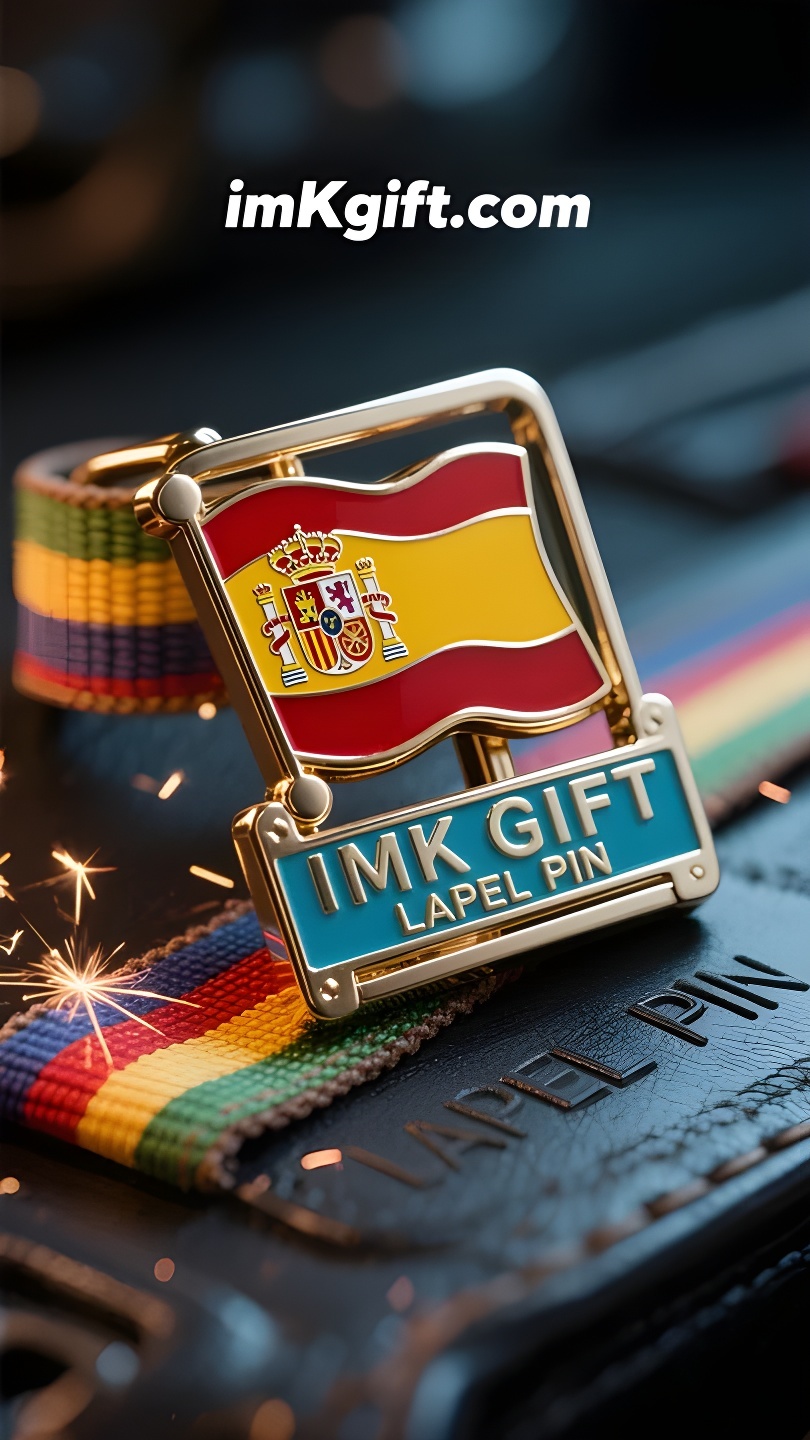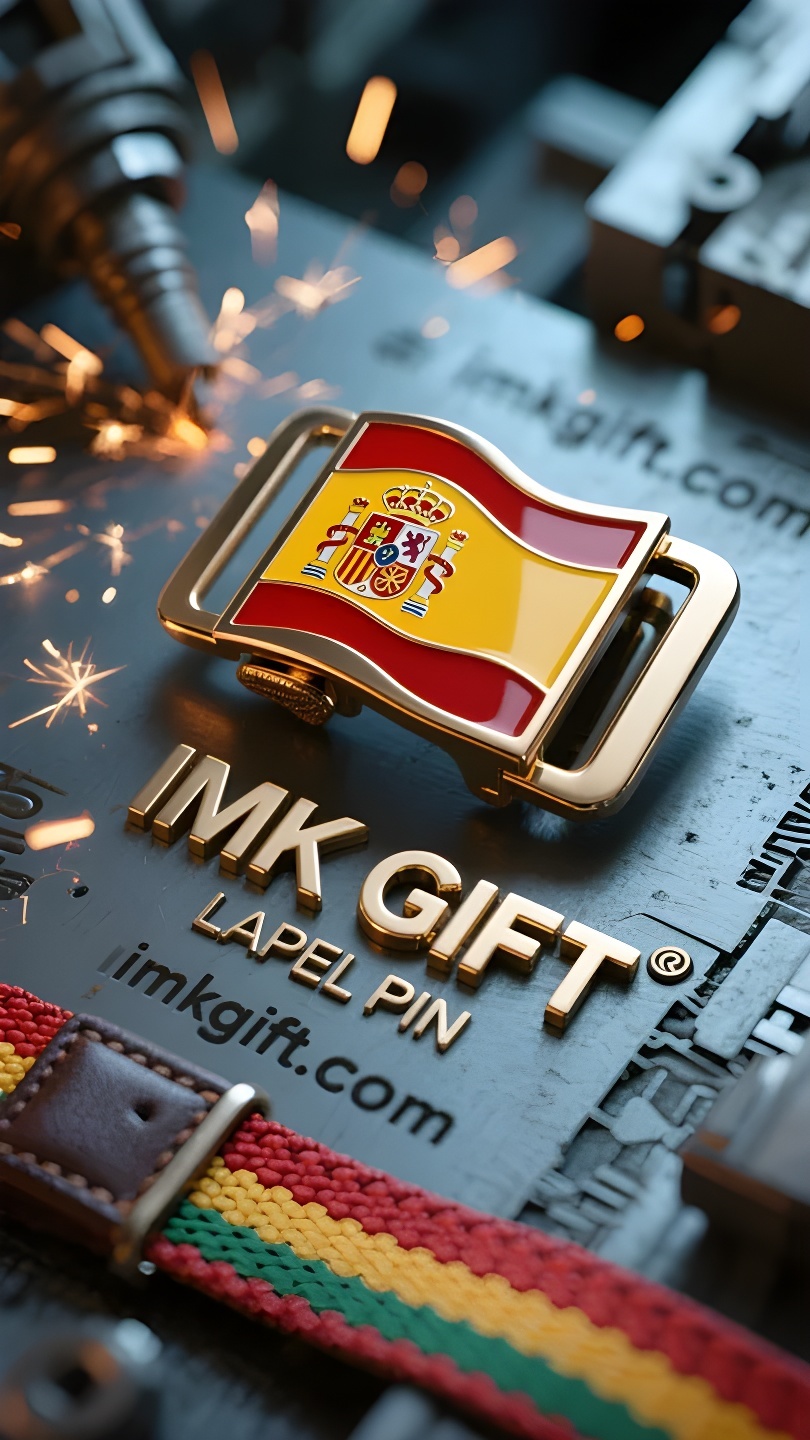in989-La-columna-vertebral-de-la-nación-en-el-escudo-de-armas
▼
En octubre, en España, las banderas nacionales rojas y amarillas ondean en las calles, y las hebillas de los cinturones con el emblema nacional en el pecho de la gente reflejan la fría luz metálica del sol. Esta hebilla de escudo de armas, que lleva 500 años de historia, utiliza el Castillo de Castilla, el León de León y la Cadena de Aragón para contar la historia épica de una nación que remenda las grietas con tenacidad. El contorno circular de la hebilla del cinturón tiene un significado profundo: no sólo es un símbolo de mantenimiento de la integridad nacional, sino también una manifestación concreta de la voluntad de unión. Cuando los reyes católicos en el siglo XV incorporaron la hebilla de hierro al escudo nacional, el sonido del temple durante la forja del hierro se convirtió en una nota al pie del espíritu nacional: sólo los metales que han sido templados a altas temperaturas pueden mantener su forma a través de la erosión del tiempo. Los españoles de hoy lo llevan como si llevaran en el corazón el coraje que forjaron sus antepasados durante la Reconquista. Las cadenas que rodeaban la parte inferior del emblema nacional alguna vez fueron malinterpretadas como una metáfora de esclavitud. Pero cuando la hebilla del cinturón reúne los elementos heráldicos dispersos en un todo, nos sorprende descubrir que este es el poder de romper los grilletes: las cadenas de las que se liberó el Reino de Navarra se convirtieron en una medalla para proteger al país, recordando a las generaciones futuras: la verdadera libertad proviene de la protección leal de las creencias comunes. Bajo la bandera que ondea en el Día Nacional, cada figura que sujeta el escudo de armas es un remache que sostiene la columna vertebral de la nación.
In October, red and yellow national flags fluttered in the streets of Spain, and the national emblem belt buckles on people’s chests reflected the cold light of metal in the sun. This coat of arms buckle, which carries 500 years of history, uses the Castile Castle, the Lion of Leon and the Aragon chain to tell the epic of a nation that used tenacity to sew up the cracks. The round outline of the belt buckle hides a deep meaning – it is not only a symbol of maintaining the integrity of the country, but also a concrete manifestation of the will to unite. When the Catholic kings in the 15th century embedded the iron buckle into the national emblem, the quenching sound during the forging of iron became a footnote to the national spirit: only metal that has been tempered at high temperatures can maintain its shape in the erosion of time. Today’s Spaniards wear it, just like pinning the courage that their ancestors forged in the Reconquista on their hearts. The chain wrapped around the bottom of the national emblem was once misinterpreted as a metaphor for bondage. But when the belt buckle gathers the scattered heraldic elements into a whole, we are surprised to find that this is the power to break through the shackles – the chains that the Kingdom of Navarre broke free of turned into a medal to protect the country, reminding future generations: true freedom comes from the loyal protection of common beliefs. Under the flag flying on National Day, every figure fastened with the coat of arms is a rivet that supports the backbone of the nation.
十月的西班牙,街巷飘荡着红黄相间的国旗,人们胸前的国徽皮带扣在阳光下折射出金属冷光。这枚承载着五百年历史的纹章扣,用卡斯蒂利亚城堡、莱昂雄狮与阿拉贡锁链,诉说着一个民族用坚韧缝合裂痕的史诗。
皮带扣的圆形轮廓暗藏深意——它既是维系国土完整的象征,更是团结意志的具象化。当十五世纪的天主教双王将铁扣嵌入国徽,铁器锻造时的淬火声便化作民族精神的注脚:唯有历经高温锤炼的金属,才能在岁月侵蚀中保持形状。如今的西班牙人佩戴它,如同将祖辈在收复失地运动中熔炼的勇气别在心口。
国徽底部缠绕的锁链,曾被误读为束缚的隐喻。但当皮带扣将散落的纹章元素收束成整体,我们才惊觉这恰是突破枷锁的力量——纳瓦拉王国挣脱的锁链化作守护国家的勋章,提醒着后人:真正的自由,源于对共同信念的忠诚守护。在国庆日飘扬的旗帜下,每个扣紧纹章的身影,都是撑起民族脊梁的铆钉。
▼
Contact Us
📞 Tel: +0086-760-85286839
📧 Email: sales3@imkgift.com








